判决
如果处理器性能、相机质量和原生谷歌集成不是重点,那么 MatePad 11.5(2025)就是中端市场上最好的平板电脑之一。出色的扬声器、高品质的外壳和强劲的电池续航能力注定了这款华为平板电脑适合多媒体使用。遗憾的是,MatePad 11.5 的亮度稍弱,影响了 HDR 显示效果。
PaperMatte 表面也并非无可挑剔。即使是在对比度极为可控的中端平板电脑上,该面板在户外也能轻松阅读。不过,色彩准确度和黑度并不完全令人信服。
如果你不担心这个问题, MatePad 11.5(2025)PaperMatte 和吸引人的 M-Pencil 应该 是日常大学生活的理想伴侣,也是笔记本电脑的好帮手。
Pros
Cons
华为 MatePad 11.5 (2025) 的价格和上市时间
华为 MatePad 11.5 (2025) 的规格
外壳和功能 - 配备磨砂显示屏的中端平板电脑
MatePad 11.5(2025)是华为平板电脑的新版本。 华为平板电脑的新版本,尽管设计几乎没有变化。这款 11.5 英寸平板电脑的做工令人印象深刻,重量仅为 515 克,非常轻巧。
它的一大亮点是采用 "PaperMatte "表面的 IPS 显示屏,至少对于户外爱好者来说是这样。这是一种具有纳米级蚀刻结构的玻璃盖板,能显著减少反光。在日常使用中,事实证明这种磨砂表面在户外非常有效。不过,MatePad 11.5(2025)缺乏官方 IP 防水或防尘认证,因此应避免淋雨。
在功能方面,华为仅依赖 USB 2.0 和蓝牙 5.2,有些过时,而且内部 UFS 内存无法扩展。WiFi 6 标准可提供稳定的连接,但没有 6 GHz 的范围。
不过,四个扬声器非常出色。在音效方面,MatePad 11.5(2025)深沉有力的低音给人留下了深刻印象。
高质量的第三代 M-Pencil 通过 NearLink 集成,可实现低延迟和精确输入。配合磨砂玻璃表面,输入体验非常出色。键盘则只能通过蓝牙连接。
» Notebookcheck多媒体笔记本电脑Top 10排名
» Notebookcheck游戏笔记本电脑Top 10排名
» Notebookcheck低价办公/商务笔记本电脑Top 10排名
» Notebookcheck高端办公/商务笔记本电脑Top 10排名
» Notebookcheck工作站笔记本电脑Top 10排名
» Notebookcheck亚笔记本电脑Top 10排名
» Notebookcheck超级本产品Top 10排名
» Notebookcheck变形本产品Top 10排名
» Notebookcheck平板电脑Top 10排名
» Notebookcheck智能手机Top 10排名
» Notebookcheck评测过最出色的笔记本电脑屏幕
» Notebookcheck售价500欧元以下笔记本电脑Top 10排名
» Notebookcheck售价300欧元以下笔记本电脑Top 10排名
尺寸比较
| Networking | |
| Huawei MatePad 11.5 (2025) | |
| iperf3 transmit AXE11000 | |
| iperf3 receive AXE11000 | |
| Oppo Pad SE | |
| iperf3 transmit AXE11000 | |
| iperf3 receive AXE11000 | |
| Xiaomi Pad 7 | |
| iperf3 transmit AXE11000 | |
| iperf3 receive AXE11000 | |
| iperf3 transmit AXE11000 6GHz | |
| iperf3 receive AXE11000 6GHz | |
| Huawei MatePad 11.5 S | |
| iperf3 transmit AXE11000 | |
| iperf3 receive AXE11000 | |
| Huawei MatePad 11.5 | |
| iperf3 transmit AXE11000 | |
| iperf3 receive AXE11000 | |
| Average 802.11 a/b/g/n/ac/ax | |
| iperf3 transmit AXE11000 | |
| iperf3 receive AXE11000 | |
| iperf3 transmit AXE11000 6GHz | |
| iperf3 receive AXE11000 6GHz | |
| Average of class Tablet | |
| iperf3 transmit AXE11000 | |
| iperf3 receive AXE11000 | |
| iperf3 transmit AXE11000 6GHz | |
| iperf3 receive AXE11000 6GHz | |
软件和可持续性 -Android 没有谷歌服务的平板电脑前作品
MatePad 11.5(2025)基于 HarmonyOS 4.3,该系统基于Android 12 的开源部分。没有预装谷歌服务和 Play Store,这意味着用户最初只能依赖 AppGallery。
如果这还不够,还可以通过极光商店访问 Google Play 商店库。安装非常简单,我们的 另一篇文章解释。
华为官方并未说明 MatePad 11.5(2025)的软件更新期限。应我们的要求,制造商确认了 5 年的更新期限。在测试时,已经安装了 2025 年 7 月的安全补丁。
华为这款产品的可持续性并不重要;至少,我们没有发现任何关于维修的官方说明或所用材料的信息。
摄像头 - 配备明亮主镜头的 MatePad 11.5 (2025)


对比:Honir Magic Pad 3(左)与华为 MatePad 11.5(2025)(右)
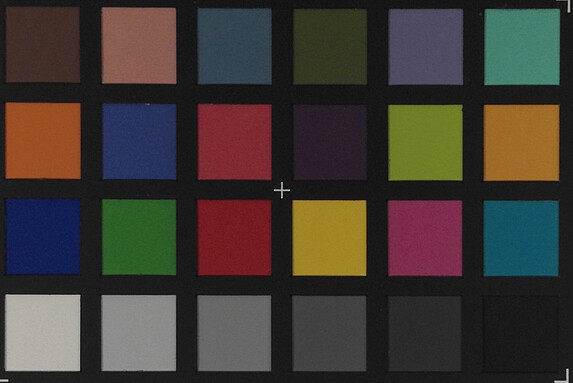
显示屏 - 中端平板电脑不依赖 OLED 显示屏
| |||||||||||||||||||||||||
Brightness Distribution: 90 %
Center on Battery: 623 cd/m²
Contrast: 629:1 (Black: 0.99 cd/m²)
ΔE ColorChecker Calman: 2.9 | ∀{0.5-29.43 Ø4.78}
ΔE Greyscale Calman: 3.9 | ∀{0.09-98 Ø5}
94.9% sRGB (Calman 2D)
Gamma: 2.33
CCT: 7191 K
| Huawei MatePad 11.5 (2025) IPS, 2456x1600, 11.5" | Oppo Pad SE IPS, 1920x1200, 11" | Xiaomi Pad 7 LCD, 3200x2136, 11.2" | Huawei MatePad 11.5 S TFT-LCD, 2800x1840, 11.5" | Huawei MatePad 11.5 IPS, 2200x1440, 11.5" | |
|---|---|---|---|---|---|
| Screen | 6% | 31% | -22% | 1% | |
| Brightness middle (cd/m²) | 623 | 518 -17% | 838 35% | 511 -18% | 472 -24% |
| Brightness (cd/m²) | 578 | 507 -12% | 815 41% | 449 -22% | 432 -25% |
| Brightness Distribution (%) | 90 | 93 3% | 96 7% | 83 -8% | 86 -4% |
| Black Level * (cd/m²) | 0.99 | 0.34 66% | 0.88 11% | 0.99 -0% | 0.44 56% |
| Contrast (:1) | 629 | 1524 142% | 952 51% | 516 -18% | 1073 71% |
| Colorchecker dE 2000 * | 2.9 | 4.54 -57% | 1.8 38% | 3.6 -24% | 3.4 -17% |
| Colorchecker dE 2000 max. * | 5.3 | 7.97 -50% | 3.9 26% | 7.5 -42% | 6.6 -25% |
| Greyscale dE 2000 * | 3.9 | 4.9 -26% | 2.5 36% | 5.5 -41% | 4.8 -23% |
| Gamma | 2.33 94% | 2.243 98% | 2.25 98% | 2.27 97% | 2.41 91% |
| CCT | 7191 90% | 7504 87% | 6912 94% | 7566 86% | 7035 92% |
* ... smaller is better
Screen Flickering / PWM (Pulse-Width Modulation)
| Screen flickering / PWM not detected | |||
In comparison: 53 % of all tested devices do not use PWM to dim the display. If PWM was detected, an average of 8121 (minimum: 5 - maximum: 343500) Hz was measured. | |||
Display Response Times
| ↔ Response Time Black to White | ||
|---|---|---|
| 21.5 ms ... rise ↗ and fall ↘ combined | ↗ 11.39 ms rise | |
| ↘ 10.11 ms fall | ||
| The screen shows good response rates in our tests, but may be too slow for competitive gamers. In comparison, all tested devices range from 0.1 (minimum) to 240 (maximum) ms. » 46 % of all devices are better. This means that the measured response time is similar to the average of all tested devices (20.2 ms). | ||
| ↔ Response Time 50% Grey to 80% Grey | ||
| 29.21 ms ... rise ↗ and fall ↘ combined | ↗ 13.29 ms rise | |
| ↘ 15.92 ms fall | ||
| The screen shows relatively slow response rates in our tests and may be too slow for gamers. In comparison, all tested devices range from 0.165 (minimum) to 636 (maximum) ms. » 38 % of all devices are better. This means that the measured response time is similar to the average of all tested devices (31.6 ms). | ||
性能、游戏、排放和电池续航时间 -Android 平板电脑不依赖高通或联发科处理器
MatePad 11.5(2025)采用了该公司自己的 麒麟 T82.这是华为著名的麒麟架构的另一种变体,但这款中档平板电脑的芯片组时钟频率略低于 麒麟 T92的 MatePad Pro 13.2或麒麟 T90A MatePad 12 X.
在 Geekbench 基准测试中,MatePad 11.5(2025)的性能也略逊于其姊妹机型。此外,小米 小米 Pad 7的 CPU 性能要强得多。
集成的 马龙 920C在 GFXBench 高 4K 分辨率的苛刻压力测试中仅达到 8 FPS,明显低于 Adreno 732小米 Pad 7 的 Adreno 732。
| Geekbench AI | |
| Single Precision NPU 1.5 | |
| Average of class Tablet (166 - 5295, n=28, last 2 years) | |
| Huawei MatePad 11.5 (2025) | |
| Average HiSilicon Kirin T82 (n=1) | |
| Half Precision NPU 1.5 | |
| Average of class Tablet (154 - 41155, n=28, last 2 years) | |
| Huawei MatePad 11.5 (2025) | |
| Average HiSilicon Kirin T82 (n=1) | |
| Quantized NPU 1.5 | |
| Average of class Tablet (88 - 57388, n=28, last 2 years) | |
| Huawei MatePad 11.5 (2025) | |
| Average HiSilicon Kirin T82 (n=1) | |
| Huawei MatePad 11.5 (2025) | Oppo Pad SE | Xiaomi Pad 7 | Huawei MatePad 11.5 S | Huawei MatePad 11.5 | Average 256 GB UFS 3.1 Flash | Average of class Tablet | |
|---|---|---|---|---|---|---|---|
| AndroBench 3-5 | -48% | 31% | -12% | -31% | -25% | -28% | |
| Sequential Read 256KB (MB/s) | 2172.43 | 980 -55% | 3911.82 80% | 1837.4 -15% | 1037.71 -52% | 1757 ? -19% | 1786 ? -18% |
| Sequential Write 256KB (MB/s) | 2011.28 | 885.6 -56% | 3387.43 68% | 1134.93 -44% | 903.32 -55% | 1204 ? -40% | 1334 ? -34% |
| Random Read 4KB (MB/s) | 278.39 | 221.2 -21% | 311.09 12% | 334.71 20% | 297.25 7% | 287 ? 3% | 244 ? -12% |
| Random Write 4KB (MB/s) | 544.27 | 215.3 -60% | 344.51 -37% | 498.29 -8% | 418.84 -23% | 318 ? -42% | 278 ? -49% |
(±) The maximum temperature on the upper side is 41.1 °C / 106 F, compared to the average of 33.7 °C / 93 F, ranging from 20.7 to 53.2 °C for the class Tablet.
(±) The bottom heats up to a maximum of 40.3 °C / 105 F, compared to the average of 33.2 °C / 92 F
(+) In idle usage, the average temperature for the upper side is 27.9 °C / 82 F, compared to the device average of 30 °C / 86 F.
3DMarkSteel Nomad 压力测试
| 3DMark | |
| Wild Life Stress Test Stability | |
| Huawei MatePad 11.5 | |
| Huawei MatePad 11.5 S | |
| Oppo Pad SE | |
| Huawei MatePad 11.5 (2025) | |
| Xiaomi Pad 7 | |
| Wild Life Extreme Stress Test | |
| Huawei MatePad 11.5 (2025) | |
| Huawei MatePad 11.5 | |
| Huawei MatePad 11.5 S | |
| Oppo Pad SE | |
| Xiaomi Pad 7 | |
| Steel Nomad Light Stress Test Stability | |
| Huawei MatePad 11.5 (2025) | |
| Xiaomi Pad 7 | |
Huawei MatePad 11.5 (2025) audio analysis
(+) | speakers can play relatively loud (85.5 dB)
Bass 100 - 315 Hz
(±) | reduced bass - on average 9.2% lower than median
(±) | linearity of bass is average (7.9% delta to prev. frequency)
Mids 400 - 2000 Hz
(±) | higher mids - on average 5.9% higher than median
(+) | mids are linear (3.6% delta to prev. frequency)
Highs 2 - 16 kHz
(+) | balanced highs - only 1.8% away from median
(+) | highs are linear (4.2% delta to prev. frequency)
Overall 100 - 16.000 Hz
(+) | overall sound is linear (11% difference to median)
Compared to same class
» 11% of all tested devices in this class were better, 3% similar, 87% worse
» The best had a delta of 7%, average was 20%, worst was 129%
Compared to all devices tested
» 6% of all tested devices were better, 2% similar, 92% worse
» The best had a delta of 4%, average was 24%, worst was 134%
Huawei MatePad 11.5 audio analysis
(+) | speakers can play relatively loud (88.1 dB)
Bass 100 - 315 Hz
(-) | nearly no bass - on average 18% lower than median
(±) | linearity of bass is average (9.6% delta to prev. frequency)
Mids 400 - 2000 Hz
(±) | higher mids - on average 5.4% higher than median
(+) | mids are linear (3.5% delta to prev. frequency)
Highs 2 - 16 kHz
(+) | balanced highs - only 3.3% away from median
(±) | linearity of highs is average (7.1% delta to prev. frequency)
Overall 100 - 16.000 Hz
(±) | linearity of overall sound is average (15.6% difference to median)
Compared to same class
» 36% of all tested devices in this class were better, 3% similar, 61% worse
» The best had a delta of 7%, average was 20%, worst was 129%
Compared to all devices tested
» 23% of all tested devices were better, 4% similar, 73% worse
» The best had a delta of 4%, average was 24%, worst was 134%
| Battery runtime - WiFi v1.3 | |
| Huawei MatePad 11.5 (2025) | |
| Oppo Pad SE | |
| Xiaomi Pad 7 | |
| Huawei MatePad 11.5 S | |
| Huawei MatePad 11.5 | |
Notebookcheck 总体评分
MatePad 11.5(2025)采用哑光显示屏,非常适合野外工作。不过,"PaperMatte "表面除了优点之外,也有缺点。
Huawei MatePad 11.5 (2025)
- 09/04/2025 v8
Marcus Herbrich
可比较的替代品
Image | Model / Review | Price | Weight | Drive | Display |
|---|---|---|---|---|---|
| Huawei MatePad 11.5 (2025) HiSilicon Kirin T82 ⎘ HiSilicon Maleoon 920c ⎘ 8 GB Memory, 256 GB | Amazon: 1. $90.76 Daguys for Huawei MatePad 11... 2. $30.39 GYSDCAZ Spanish Ñ Keyboard ... 3. $9.86 NEOYUKL Cover for Huawei Mat... | 515 g | 256 GB UFS 3.1 Flash | 11.50" 2456x1600 255 PPI IPS | |
| Oppo Pad SE Mediatek Helio G100 ⎘ ARM Mali-G57 MP2 ⎘ 8 GB Memory, 128 GB UFS 2.1 | Amazon: 1. $16.98 Case for Oppo Pad SE Tablet,... 2. $15.92 for OnePlus Pad Lite/Oppo Pa... 3. $525.00 OPPO Pad SE 11 Inch 128GB RO... List Price: 269€ | 530 g | 128 GB UFS 2.2 Flash | 11.00" 1920x1200 206 PPI IPS | |
| Xiaomi Pad 7 Qualcomm Snapdragon 7+ Gen 3 ⎘ Qualcomm Adreno 732 ⎘ 12 GB Memory, 256 GB | Amazon: 1. $379.50 XIAOMI Pad 7 Ai WiFi Version... 2. $529.50 Xiaomi Pad 7 Pro Ai WiFi Ver... 3. $345.00 XIAOMI Pad 7 Ai WiFi Version... List Price: 400€ | 500 g | 256 GB UFS 4.0 Flash | 11.20" 3200x2136 344 PPI LCD | |
| Huawei MatePad 11.5 S HiSilicon Kirin 9000W ⎘ HiSilicon Maleoon 910 ⎘ 8 GB Memory, 256 GB | Amazon: 1. $28.99 YOUULAR Tablet Case for Huaw... 2. $12.96 Kepuch Custer Case Compatibl... 3. $11.96 Kepuch 2 Pack Tempered Glass... List Price: 399€ | 510 g | 256 GB UFS 3.1 Flash | 11.50" 2800x1840 291 PPI TFT-LCD | |
| Huawei MatePad 11.5 Qualcomm Snapdragon 7 Gen 1 ⎘ Qualcomm Adreno 644 ⎘ 6 GB Memory, 128 GB UFS 2.1 | Amazon: 1. $95.81 Lkfyyds for Huawei MatePad 1... 2. $37.59 arVin Wireless Gaming Contro... 3. $106.56 For Huawei M-Pencil (3rd Gen... List Price: 299€ | 499 g | 128 GB UFS 2.2 Flash | 11.50" 2200x1440 229 PPI IPS |
Transparency
The selection of devices to be reviewed is made by our editorial team. The test sample was provided to the author as a loan by the manufacturer or retailer for the purpose of this review. The lender had no influence on this review, nor did the manufacturer receive a copy of this review before publication. There was no obligation to publish this review. As an independent media company, Notebookcheck is not subjected to the authority of manufacturers, retailers or publishers.
This is how Notebookcheck is testing
Every year, Notebookcheck independently reviews hundreds of laptops and smartphones using standardized procedures to ensure that all results are comparable. We have continuously developed our test methods for around 20 years and set industry standards in the process. In our test labs, high-quality measuring equipment is utilized by experienced technicians and editors. These tests involve a multi-stage validation process. Our complex rating system is based on hundreds of well-founded measurements and benchmarks, which maintains objectivity. Further information on our test methods can be found here.




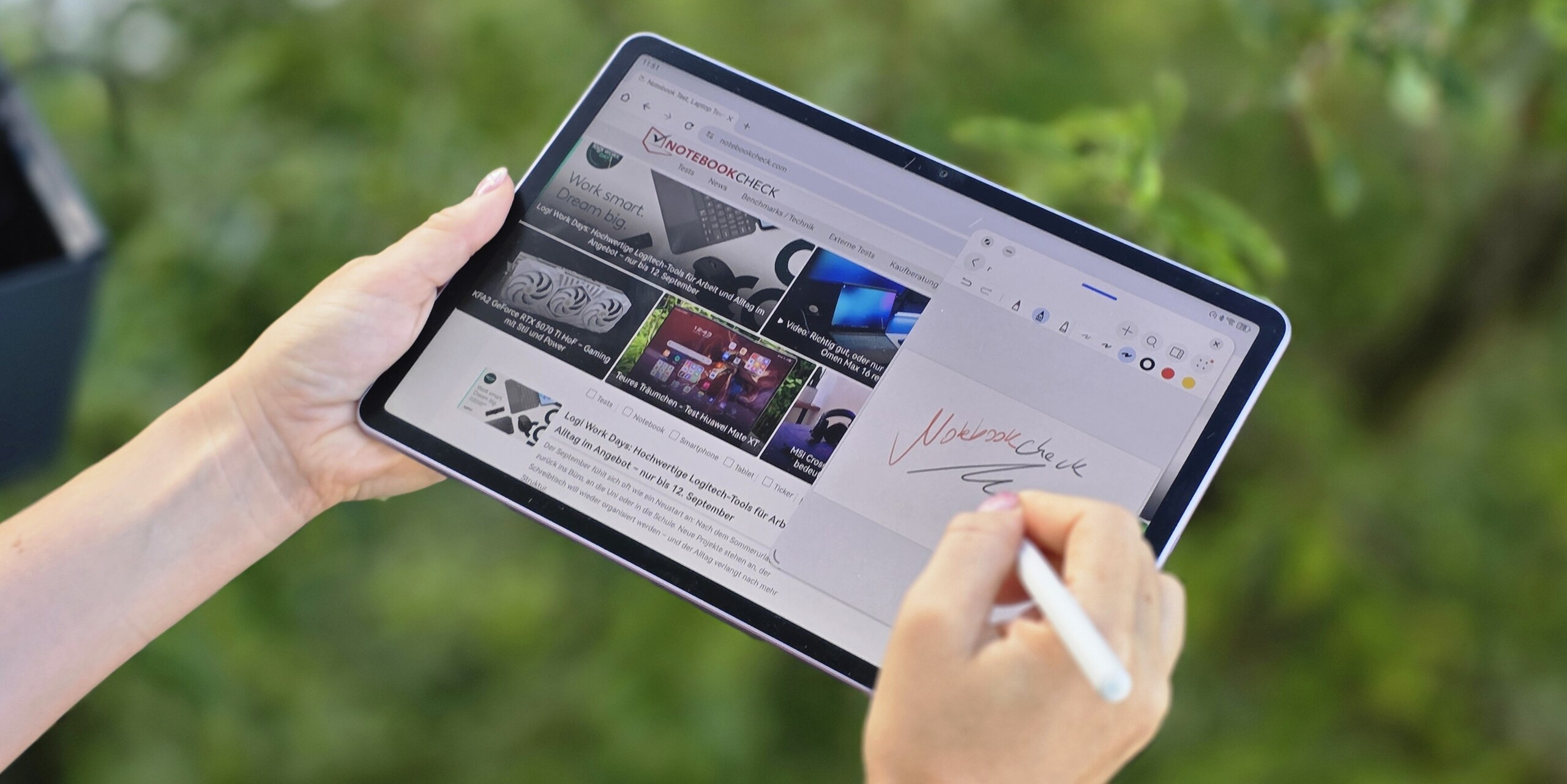

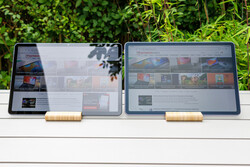
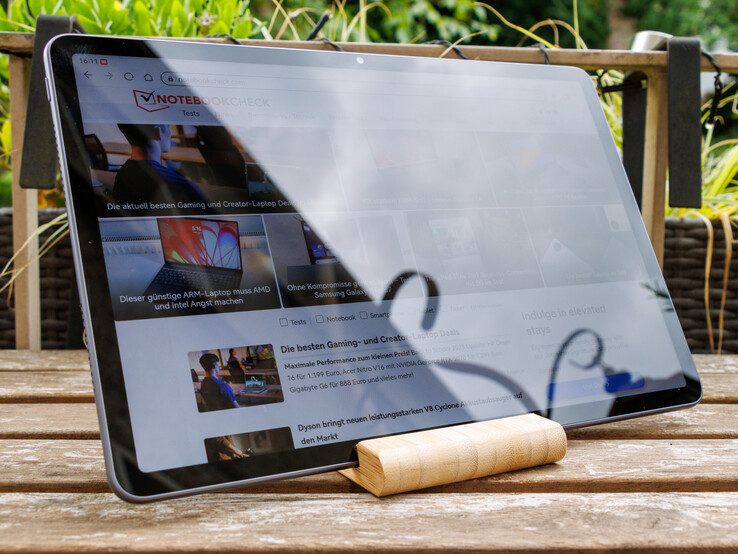




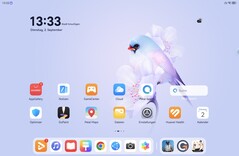

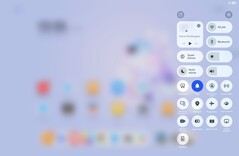




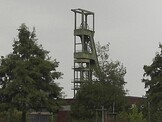
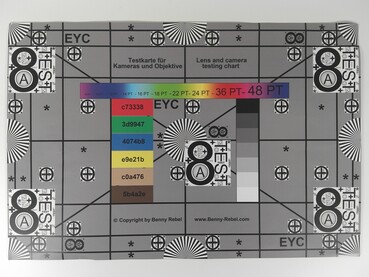


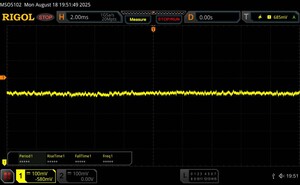
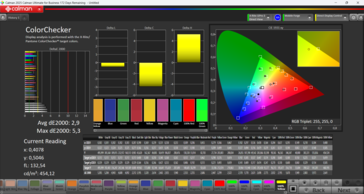

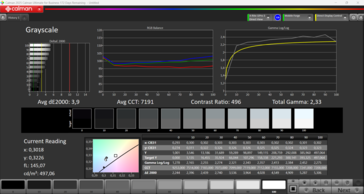
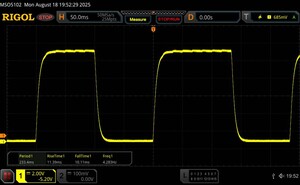
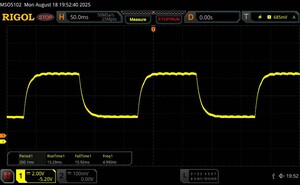



 Total Sustainability Score:
Total Sustainability Score: 




